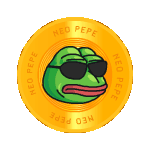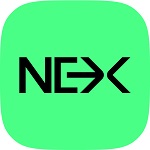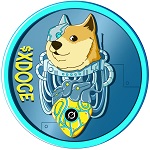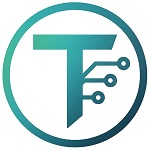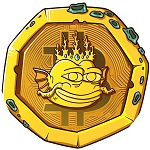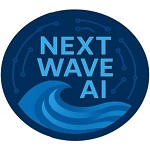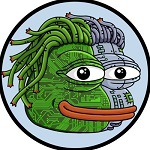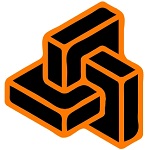Top ICO list: The Best Newest Cryptocurrency Coins, Tokens & Projects to Buy
| Projects | Status | Start | Raised | Launchpad | Ecosystem | X score | Interest lvl | Industry | ||
|---|---|---|---|---|---|---|---|---|---|---|
|
Ongoing ICO |
Dec 15, 2024 |
| Meme | |||||||
|
Ongoing ICO |
Feb 10, 2025 |
| Meme | |||||||
|
Ongoing ICO |
May 22, 2025 |
| Meme | |||||||
|
Ongoing ICO |
Nov 21, 2024 |
$2M
|
| Exchanges & Wallets + 2 | ||||||
|
Ongoing ICO |
May 06, 2025 |
| NFT + 2 | |||||||
|
Ongoing ICO |
Apr 03, 2025 |
| Adult + 1 | |||||||
|
Ongoing ICO |
Jan 20, 2025 |
| Meme | |||||||
|
Pre-Sale ICO |
Jun 06, 2024 |
| Gaming & VR | |||||||
|
Pre-Sale ICO |
Jun 09, 2025 |
| Meme | |||||||
|
Ongoing ICO |
Jan 14, 2025 |
| Blockchain Infrastructure + 3 | |||||||
|
Pre-Sale ICO |
Mar 18, 2025 |
| Blockchain Infrastructure + 4 | |||||||
|
Ongoing ICO |
Jun 03, 2025 |
$3M
|
| Data Analytics + 1 | ||||||
|
IEO Ongoing IEO |
Jun 10, 2025 |
| Gaming & VR + 1 | |||||||
|
Pre-Sale ICO |
May 22, 2025 |
| DeFi + 2 | |||||||
|
Ongoing ICO IDO Ongoing IDO |
Apr 20, 2025 |
| Trading & Investing + 7 | |||||||
|
Pre-Sale ICO |
May 19, 2025 |
| AI & Neural Networks + 3 | |||||||
|
Ongoing ICO |
Jun 10, 2025 |
| Science & Research + 1 | |||||||
|
Pre-Sale ICO |
Jun 04, 2025 |
| AI & Neural Networks + 4 | |||||||
|
Ongoing ICO |
May 14, 2025 |
| Gaming & VR + 1 | |||||||
|
Pre-Sale |
Jun 04, 2025 |
| Meme + 1 | |||||||
|
Ongoing ICO |
May 30, 2025 |
| Meme + 1 | |||||||
|
Pre-Sale ICO |
Mar 17, 2025 |
$0,09M
|
| Meme + 1 | ||||||
|
IDO Ongoing IDO |
Jun 05, 2025 |
| AI & Neural Networks + 6 | |||||||
|
Ongoing ICO |
May 25, 2025 |
| Charity & Donations + 3 | |||||||
|
Pre-Sale ICO |
May 31, 2025 |
| Gaming & VR + 3 | |||||||
|
Pre-Sale Upcoming ICO |
Jun 20, 2025 |
| Energy & Utilities + 3 | |||||||
|
Pre-Sale ICO |
Oct 03, 2024 |
| IT & Software + 8 | |||||||
|
Pre-Sale ICO |
May 19, 2025 |
| AI & Neural Networks | |||||||
|
IDO Ongoing IDO |
May 12, 2025 |
| AI & Neural Networks + 2 | |||||||
|
Ongoing ICO |
May 21, 2025 |
| Exchanges & Wallets + 1 | |||||||
|
IDO Ongoing IDO |
May 25, 2025 |
| AI & Neural Networks | |||||||
|
IDO Ongoing IDO |
Jun 16, 2025 |
| Web 3.0 + 1 | |||||||
|
IDO Ongoing IDO |
May 25, 2025 |
| Social Network & Communication + 3 | |||||||
|
Ongoing ICO |
May 15, 2025 |
| Meme + 1 | |||||||
|
IEO Ongoing IEO |
May 16, 2025 |
| Blockchain Infrastructure + 6 | |||||||
|
Ongoing ICO |
Dec 02, 2024 |
| Gaming & VR + 4 | |||||||
|
Pre-Sale ICO |
May 25, 2025 |
| Crowdfunding & Lending + 1 | |||||||
|
Ongoing ICO |
Apr 26, 2025 |
| NFT + 1 | |||||||
|
Ongoing ICO IDO |
Apr 24, 2025 |
| Education + 2 | |||||||
|
Pre-Sale ICO |
Apr 20, 2025 |
| Meme | |||||||
|
Ongoing ICO |
Apr 21, 2025 |
| Meme | |||||||
|
Ongoing ICO |
Apr 14, 2025 |
| AI Agents | |||||||
|
Pre-Sale ICO |
Apr 08, 2025 |
| DeFi + 1 | |||||||
|
Ongoing ICO |
Mar 19, 2025 |
| Meme + 1 | |||||||
|
Ongoing ICO |
Mar 21, 2025 |
| Web 3.0 + 2 | |||||||
|
Pre-Sale ICO |
Mar 24, 2025 |
| Trading & Investing + 1 | |||||||
|
Pre-Sale ICO |
May 15, 2025 |
| Blockchain Infrastructure + 3 | |||||||
|
Pre-Sale ICO |
Mar 10, 2025 |
| Blockchain Infrastructure + 1 | |||||||
|
Pre-Sale ICO |
Mar 10, 2025 |
| DeFi + 1 | |||||||
|
Pre-Sale ICO |
Mar 10, 2025 |
| Finance Services & Banking + 2 | |||||||
New altcoins and the crypto projects industry of 2025
Today, it is obvious that investors and traders don’t always have the time and knowledge to learn all the important aspects of investing in cryptocurrency projects, maximizing their benefits. Especially in such a volatile market, with a wide range of different token sale methods and many ways of profitable investing.
As a reminder, besides ICO, IDO, IEO, ETO and other models of token sales and digital asset allocation, there are more modern models and some of them are only now gaining momentum. For example, Node sales, Point Farming, Retrodrops or Mini-apps in Telegram.
Node Sales
One of the relatively new ways to raise capital for blockchain startups. In this model, blockchain projects actually sell a patent license with the right to manage a node in their ecosystem. The user paying funds in return receives not only a node under his or her own management, but also the opportunity to receive a reward for this in the form of project tokens, NFTs, a part of the fees and much more.
Point Farming
A model in which users receive stimulus in the form of points for certain actions in an application or blockchain protocol. For example, by linking a crypto-wallet or making a transaction or a certain action within the interface of a developed application, a participant receives a certain number of points in his account. Then, after some time, users have the opportunity to convert these points into a certain number of tokens, which will be distributed automatically in the form of an Airdrop.
This is a great opportunity for almost any crypto project to make a name for itself, increase audience loyalty, brand recognition and improve key metrics.
Retrodrops
A similar model to Airdrop, but with a greater advantage where tokens do not have to be purchased in order to become a participant. Instead, the user is required to be socially active within a particular crypto startup. For example, a participant needs to put likes, re-tweet the blockchain project’s posts on social media, write comments, reviews, make transactions in their crypto wallet and much more.
Another important difference between Retrodrop and Airdrop is that the information and details of Retro distribution are almost never announced by developers. At the same time, only early participants who have interacted with the project from the very beginning can expect to be rewarded. It also solves the problem of multi-accounting. At the same time, the lack of detailed information can be compensated by a higher reward volume, unlike the classic Airdrop.
Airdrops by Telegram mini-apps
A special mention should be made of the mechanisms that are now implemented in the messenger Telegram. Namely, Mini-Apps that are deployed in the TON blockchain ecosystem. There is a huge popularity of games and apps, in which users, performing certain actions and tapping on the phone screen, get good Airdrop rewards in form of tokens of these projects.
Moreover, mini-apps act as an additional tool to attract more users and investors’ attention. This model enhances the key metrics of a crypto product and unlocks the potential of developed applications in The Open Network ecosystem.
As you can see, through Cryptototem service, each of you has the opportunity to make more and more correct investment decisions. And our database provides current and active pre-sale offers or upcoming events in the cryptocurrency landscape.
This approach significantly saves time for our users who are in search of more profitable and promising blockchain projects to invest in.
And one of the main goals of Cryptototem is to provide complete, but at the same time truthful and actual information about every project in the blockchain industry.
Frequently Asked Questions
What does an ICO mean?
An Initial Coin Offering or Initial Token Offering (ITO) is a type of project or startup financing that is conducted with the help of issuing coins (or tokens). Tokens are purchased by participants (investors) in return for an eligible payment instrument (e.g. stablecoins) or cryptocurrencies such as Bitcoin or Ethereum. The value of those tokens depends on the project viability and can grow far higher later. In terms of technical framework, ICOs are associated with Blockchain and smart contracts.
What is Blockchain?
Blockchains are decentralized and secure databases. This concept was introduced by mysterious Satoshi Nakamoto in 2008 and put into action as part of the cryptocurrency named Bitcoin. Basically, Blockchain acts as a public account book that keeps all Bitcoin transactions and allows distributing digital data so that not a single entry can be retrospectively modified. This technology can find—and already finds—use in various verticals including finance, real estate, health care, etc.
What is Smart Contract?
A smart contract is a computer protocol intended to ensure transparent performance of a contract, in digital form and with no third party involved. Smart contracts help negotiate, exchange valuable assets, shares, or money in a conflict-free way. The term was coined in 1994 by American cryptographer Nick Szabo. What constitutes the cornerstone principle of a smart contract is complete automation and accuracy of performance of contracts.
What is a Whitepaper?
A white paper is the main official document of a project participating in an ICO, IDO or IEO. Being a definitive guide, it may affect investors’ decision-making. The document helps readers tap into a problem and presents an intended solution to the described issue.
What is the difference between ICO and IPO?
An Initial Public Offering (IPO) is a process in which company shares can be openly purchased—this is how a private company can go public. The main difference is that IPOs are carried out for established companies while ICOs, usually, are endeavors of high-risk market newcomers.
Is ICO legal?
An ICO can be regulated by local law (e.g. corporate licensing). But, as long as tokens are distributed across different jurisdictions, ICOs cannot be limited to local issues. In July 2017, the U.S. Securities and Exchange Commission declared it may be entitled to apply the Securities Act to ICOs. Whether law is applied or not will depend on specifics of every particular case. Please refer to the SEC guidance.
What is an STO?
An STO is, basically, a token offering by virtue of crowdfunding. Tokens can be underpinned by company assets (e.g. shares), dividend right, or voting right. A security token allows its holder to vote and is being regulated by the SEC. This limits the range of potential investors that are eligible to sponsor the instrument.
What is IEO?
An Initial Exchange Offering (IEO Launchpad) is the process during which tokens or coins are being sold under the control of a crypto exchange. Just like ICOs, IEOs allow investors to get new tokens; the only difference is that, within an IEO, tokens are distributed over the exchange that has specific commitments associated with every project it supervises.
What is IDO?
IDO (Initial DEX Offering) is an alternative ICO, IEO or STO model of raising funds for blockchain startups, which is done on decentralized platforms or Launchpads. That is, the initial offering and tokens or cryptocurrency launch is done directly on decentralized exchanges. And this means that all the key processes of transactions and fundraising will take place automatically, thanks to smart contracts on DEX platforms.
How do I find a good crypto project?
Here’s the short guide to finding the best crypto project to engage in:
- Look at the projects listed on our platform
- Best projects have respected and trusted developer teams
- Best company is venture financing
- Community support
- Scrutinize the whitepaper and roadmap
- Read the code
What is cryptocurrency and digital assets
Cryptocurrency is an encrypted digital currency used for various exchanges of value and online transactions. Coins and tokens are flexible and are considered as the equivalent of physical currency when exchanging goods or services. Today, there are over 10,000 crypto assets in the world and the total market capitalization is over $2.14 trillion.
Bitcoin and altcoins offer high profit potential with a very wide range of trading opportunities. Due to the high volatility of cryptocurrencies, traders can take different portions of these digital currencies and determine their positions for profit. It is very important to distinguish between coins and tokens as they are often confused.
The four common types of digital assets are; Utility tokens, Securities, Stablecoins, and Cryptocurrency.
The term “altcoins” refers to a cryptocurrency that is an alternative to Bitcoin. Most altcoins are variants based on Bitcoin’s original open-source protocol, but with modifications to its source code (forks). Thus, an altcoin is a completely new piece of digital coin with different types of functionality as well as protocols.
On the other hand, tokens are a representation of an asset or utility that are created on other blockchains (e.g. Ethereum). They can represent assets that can be traded, from goods to services and even other cryptocurrencies! Creating tokens does not require modifying the source code or creating a new blockchain. They are created and distributed using ICO, IDO, IEO, INO models, which is a strategy for crowdfunding and financing the development of new blockchain startups.
What an ICO (Initial Coin Offering) is
It is also regarded as an alternative form of crowdfunding for releasing a new crypto unit.
Startups use ICOs as a means to raise development funds. They have been used to raise millions of dollars for blockchain-related projects.
ICO is one of the easiest and most effective ways to attract investments. For every new cryptocurrency, the company or individual will need to source funds needed for all the technical development, so they usually sell tokens in exchange for major currencies such as BTC or ETH. ICO periods usually last at least a week.
There are different forms of ICOs with specific timeframes and goals. An example of an ICO may include having a pre-designated price for all tokens. In such a case, the token supply is static. However, a static token supply may include a dynamic funding goal which determines token distribution based on funds received.
One of the most successful ICO projects is Ethereum, which had Ether as their tokens. Only Ethereum ICO was able to garner up to $18 million dollars in BTC during their crowd sale. The project started in 2015 and already had a huge increase in price by 2016 with a market capitalization of more than $1 billion.
A lot of people confuse an ICO with an IPO (Initial Public Offering), but they have a lot of differences. In fact, an ICO doesn’t give you any kind of ownership of the company trying to create its own crypto unit. Tokens distributed from an ICO will gain value, with the ICO allotting equity equivalent to the token, which gives the company or investor ownership with voting rights and qualification for dividends.
In highlighting the top ICOs, there is no sure-fire way of distinguishing good projects from bad ones. At CRYPTOTOTEM, we help our investors assess risk by systematically reviewing the objectives behind different offerings, using structured criteria.









